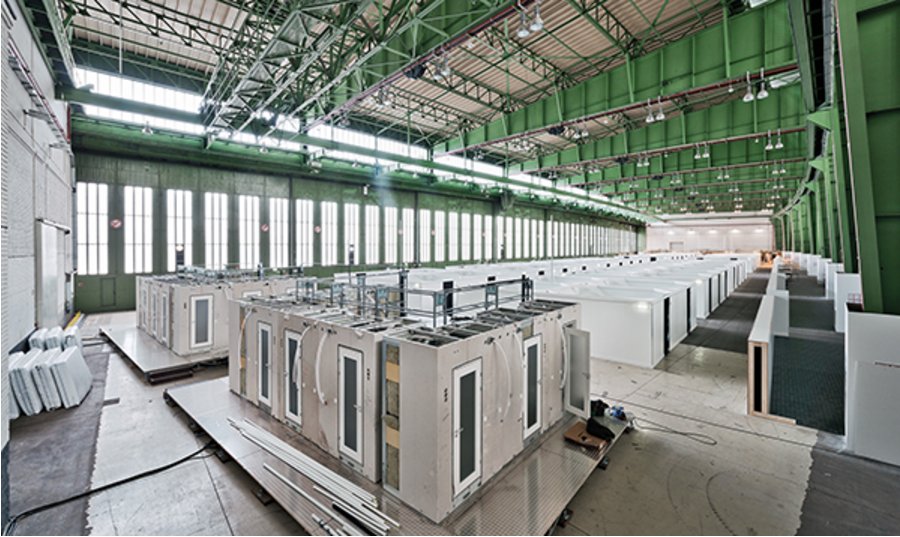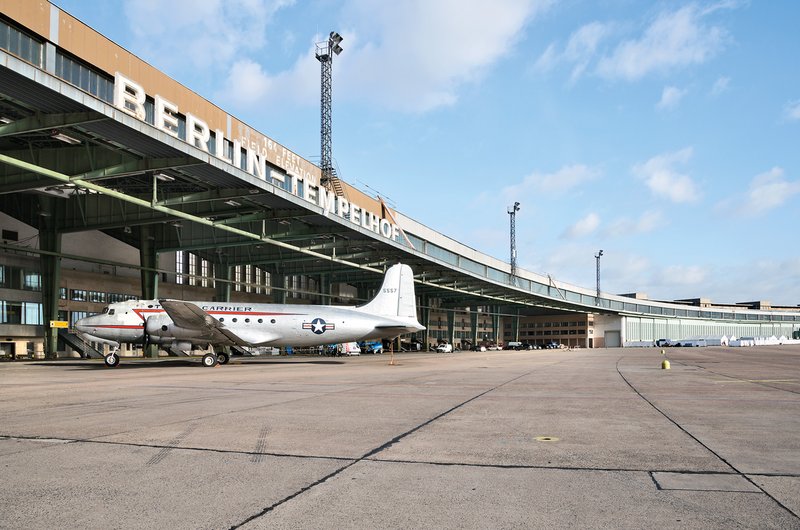Tempelhof Airport: Geberit provides sanitary facilities for 7,000 refugees

Photos: Geberit
The dimensions are impressive: the emergency accommodation at Tempelhof Airport provides space for up to 7,000 people, spread over six hangars with around 28,000 square metres of floor space plus another 110,000 square metres outdoors. Eventually, there is to be one “hotel box” containing a toilet and shower for every 15 residents. A project of this scale calls for a great deal of experience and technical expertise. Sanitary technology expert Geberit has supplied the sanitary facilities for the emergency accommodation in Berlin.
“Nothing here is standard,” says Lars Kossler, whose fitting company Showcomfort is responsible for installing the sanitaryware in the six hangars at Berlin Tempelhof. That’s because everything that’s put in place to provide basic sanitary facilities here needs to be not just mobile but extremely robust as well. What’s more, it has to be possible to dismantle the equipment again quickly and adapt it to changing circumstances. Depending on the size of the individual hall, one or two sanitary “islands” will be installed in each of the six aircraft hangars. At their centre is a heat pump that supplies hot water to tanks with a storage capacity of approx. 7,000 litres, plus a pumping system for sewage disposal. “Hotel boxes” containing a toilet and shower are installed all around. They were imported from Lithuania – according to Kossler, “simply because they were available for immediate delivery.”
“Our learning curve is steep, because when this many people come together in a confined space, any weak points are mercilessly revealed. You have to realise that the sanitary boxes are the only places where people here can actually retreat and lock the door behind them,” explains Kossler. Glass elements were removed due to the risk of injury, and Kossler had the simple plastic-coated fittings in the hotel boxes replaced with extremely robust fittings designed for up to 1,700 contacts per day. “Due to our experiences with other projects, we stuck all the fittings down with Loctite,” reports Kossler, “because otherwise, some resourceful individuals would remove them and then rent them out to other residents – for a fee.”
In order to avoid damage within the system and restrict failures to a limited area, the installations are monitored when outage notifications are received. When there is a power outage, for instance, the water supply is also interrupted to prevent leaks. There are inspection flaps with an anti-obstruction grating behind every toilet outlet to prevent blockages. Whether it’s a tennis ball or a nappy: anything that could pose a risk to the pipes is intercepted and can be removed easily.
Further information:
